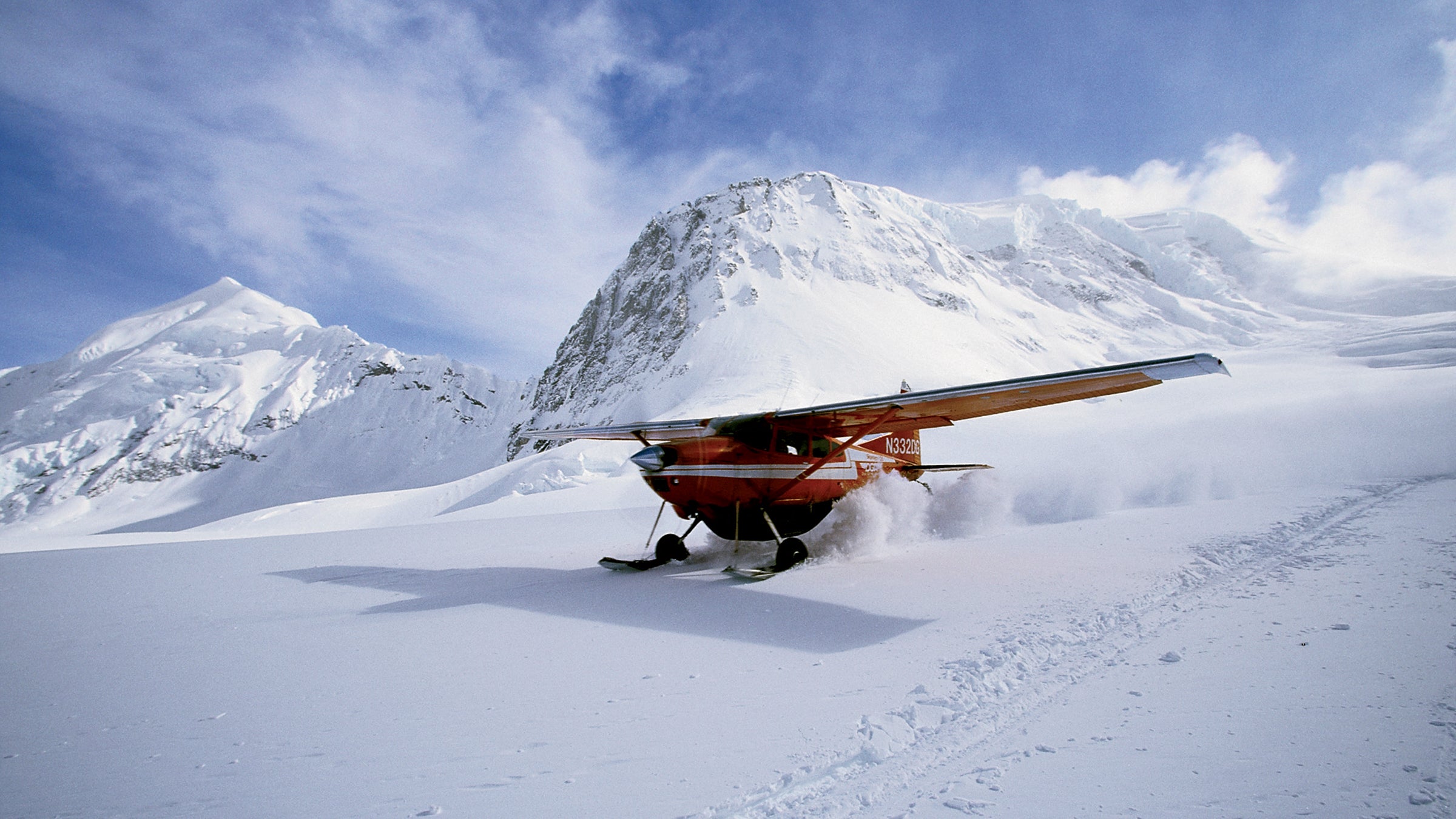One of the reasons I love Alaska is that almost every conversation between skiers, hunters, whitewater enthusiasts, fishermen, or mountaineers ends up being a discussion about the state. If you start out talking about kayaking the Everglades, you’ll soon be discussing a paddling trip up through the Inside Passage of Southeast Alaska. And if you’re chatting about striped bass in Montauk, it won’t be long before the conversation progresses to the salmon runs of the Yukon River. It’s like a law of nature: Alaska is the final word on everything outdoors, the exclamation point at the end of every adventurous sentence.
Map
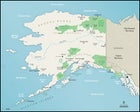 Alaska
AlaskaMaybe it has something to do with its size. I keep a large topographical map of the state pinned to the wall of my bedroom. A lot of times I’ll be in the middle of some mundane task, like picking up clothes or making the bed, and I’ll catch myself just staring at it. My eyes will drift westward to Umnak Island, way out toward the tip of the Aleutian archipelago, in the Bering Sea. Then they’ll move across the map in an upward diagonal direction to where the Arctic National Wildlife Refuge takes in the Romanzof Mountains. The distance between those points is about 1,400 miles, roughly the distance from New York City to Houston. When staring at the map, I’m often visited by an overwhelming sense of bewilderment and lust. Before I can go back to whatever I was doing, I select some point on the map and make myself a promise: Someday I’m going to visit that spot.
Fulfilling these promises is not always easy. A few years ago, I had a chance to visit one of the most remote points in the state (and, therefore, one of the most remote points in North America). First I caught a commercial flight from Anchorage to Fairbanks. There I climbed into the co-pilot’s seat of a single-engine propellor plane hauling geological supplies to a camp on the Arctic tundra. Three hours after flying over the Yukon River, we landed on a gravel airstrip next to a helicopter pad and a tent. I was now 160 miles from the nearest road, which was dirt. Then I took a half-hour helicopter flight, and after flying over three of the state’s approximately 10,000 wolves and two of its 30,000 grizzlies, we reached our destination. I thought about how we usually travel in order to become intimate with new places. But when traveling in Alaska, any sense of physical intimacy is counterbalanced by a landscape that is gloriously incomprehensible.
I’ve been hanging around in Alaska since my brother took a position as an ecologist at the University of Alaska Anchorage in 2000. During the past decade of adventures, I’ve experienced a litany of things that constitute my own personal biggest, best, and baddest. I had my closest brush with death while floating down the Chetaslina River in a leaky drysuit after a buffalo hunt, hanging from the side of an inflatable pack raft loaded with more than 300 pounds of meat in the sub-freezing temperatures of an October night. I had my most startling moment in the Chugach Mountains when my partner came rolling and screaming downhill after getting zapped in the shoulder by a porcupine that was hidden in an alder. I had my most nerve-racking moment at sea while motoring a small skiff with my brother through the current-ripped passages of Southeast Alaska last December; it was perfectly dark at 4 p.m., and we hit a submerged log that knocked out the engine and caused a surge of water to crash over the bow. And I was most blown away by the beauty of the earth when I crested a divide in the Alaska Range and looked out over a corrugated landscape of rock and ice that had turned freakishly red in the sunlit smoke of a distant tundra fire.
There’s no need to be intimidated by such tales. Believe it or not, you can ease into Alaska. The first step is to name your desire. Start with something specific: You want to gawk upward at Denali, North America’s highest peak; or you want to watch beluga whales gorge on migrating salmon during the high tide in Turnagain Arm, near Anchorage; or you want to hear the eerie, catlike meow of a rutting moose on the Kenai Peninsula.
From there, one thing will lead to another. A few years ago, I went on a fishing trip to Prince of Wales Island, in Southeast Alaska. The labyrinthine coasts of the islands and fjords continued to haunt my imagination when I got home. Before I could return, I’d become the proud owner of a cabin on the island. It sits on pilings over the confluence of a mountain stream and the ocean. It is accessible only by boat or floatplane. The creek has a salmon run. Needless to say: If you start talking to me about cabins, you can see where the discussion will lead.
—Steven Rinella
Denali National Park and Preserve
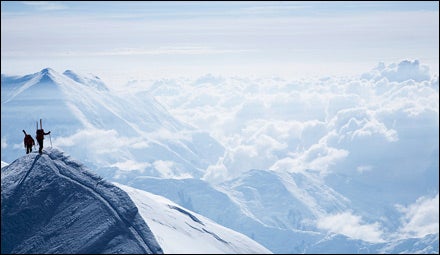
The Sell: Climbing the tall one; hiking in solitude
Rumor has it that on an Alaska Airlines flyby of 20,320-foot Denali, one Texas passenger asked a flight attendant why the mountain had superhighways leading up to it. The glacial moraines do look a little like an interstate on the massive peak, which dwarfs all others in the 600-mile Alaska Range. But there’s a lot more to this six-million-acre park than a big hunk of granite. It’s one of the only spots in the world where you can ride a bus, get off, hike a few miles in, and have a 20-square-mile swath of wilderness to yourself. Few cars are allowed on the single 91-mile gravel artery, so campers and mountaineers have to hoof it, bike it, or watch the rutting moose from the comfort of the bus.
Outfitted: On ‘s ten-day, entry-level Alaska Seminar, there’s a three-to-one client-to-guide ratio, ensuring that you’ll always have an expert on hand to help you with the basics of mountaineering: knot tying, crevasse rescue, ice climbing, route finding, and deciphering big-mountain weather. Complete this mid-May course on Denali’s Kahiltna Glacier and you’ll be prepared for a guided summit bid ($2,400).
DIY: Denali has six designated along the park road, most of which you can reserve in advance ($9 per night). For backcountry campers, there are no designated sites and no advance reservations. Just show up at the , at the park’s north entrance, and a ranger will help you plot your course, give you a free permit, assign you a bear container, and give you the mandatory safety talk about food storage, river crossings, and how to avoid hypothermia ($10 park entrance fee per person). If hot meals and a bed sound better, reserve a cabin at Camp Denali. Built in 1951 and sitting on 67 acres with views to 11 major peaks in the Alaska Range, predates the existing park. The 18 hand-built cabins, with homemade quilts, fireplaces, and meticulously kept outhouses, are like a Hollywood version of frontier life. Hike with one of the expert naturalists, borrow one of the camp’s bikes and ride the park road, or wet your fly line in a pretty creek. Wind down with a meal from the camp’s organic greenhouse and on-site bakery (three nights, $1,515).
Wild Card: It’s technically south of the park, but if you want a blowout high-alpine adventure in sight of Denali, head to . Customize all sorts of adventure using this luxurious lodge on the shores of Judd Lake as your base camp: Heli-fish for trophy trout, heli-hike near active volcanoes, climb granite crags, or paddleboard among icebergs near Strandline Glacier ($1,300 for two days/one night, including internal air from Anchorage; plus guided activity fees).
Yukon-Charley Rivers National Preserve
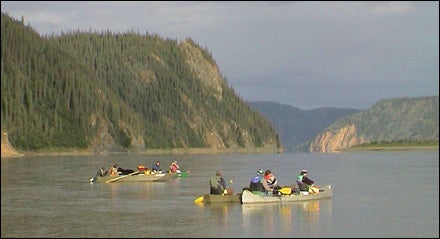
The Sell: Paddling the frontier
Jack London, the 1880s Klondike gold rush, the Yukon Quest dogsled race—few wild spaces hold more historical cachet than this wide-open, undulating, 2.5-millon-acre hunk of tundra 125 miles east of Fairbanks. In August, when the mosquitoes die off and the temperatures drop from 90-degree highs, the mighty Yukon River (which is a relatively easy float as long as you stay upright in your canoe) turns into an Alaska-style freeway. History and river buffs paddle the silty, 50-degree water from the historic town of Eagle to see abandoned gold dredges, endangered peregrine falcons in the limestone bluffs, and caribou from the Fortymile herd on the hillside.
Outfitted: You’re in for a wild ride on the Charley, the most under-the-radar whitewater trip in Alaska—it’s so off the map that this Yukon-tributary river feels almost exploratory. Raft it in a 16-foot SOAR inflatable canoe with . The first two days you’ll ride the Charley’s Class III water, with time to spin-cast for grayling (bring your own fishing gear) and eat delicious camp grub like chorizo-scramble burritos. After the Charley spits you into the Yukon, you’ll paddle the wide river for two to three days, the first night bellying up to the stove at Slaven’s Roadhouse, a pit stop on the Yukon Quest ($3,650, including transportation to/from Fairbanks; $300 discount for ���ϳԹ��� readers).
DIY: Fly 90 minutes from Fairbanks to Eagle on ($170 each way), then rent a sturdy Old Town canoe from for a five-to-six-day, 165-mile paddle on the Yukon ($195, plus $20 return fee). You’ll see fox, moose, and grizzlies (or at least their scat). Camp on gravel bars or islands, or stay in one of five free National Park Service public-use cabins, equipped with bunks, stoves, and outhouses (first come, first served; no fee). The in Eagle can help you with logistics. Warbelow’s will fly you back to Fairbanks from Circle, the end of the line ($99 each way).
Wrangell-St. Elias National Park and Preserve
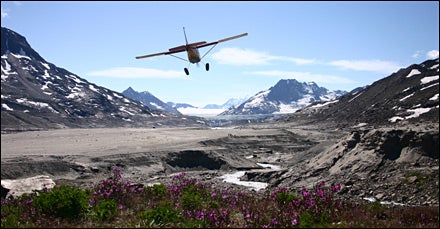
The Sell: Wilderness on steroids
The largest national park in the U.S., 200 miles east of Anchorage, is six times the size of Yellowstone and has 14,185 square miles of designated wilderness and a glacier the size of Rhode Island. It also contains four mountain ranges—the Chugach, Wrangell, St. Elias, and the eastern part of the Alaska Range—nine of the 16 highest peaks in the country, and most of the largest mammals in the U.S., including grizzlies and black bears, woodland bison, mountain goats, caribou, and moose. If you’re a competent backcountry traveler and love to explore in a kayak or hike with a fully loaded 5,000-cubic-inch pack, this park’s for you.
Outfitted: Go where no man has gone before on ‘s eight-day St. Elias kayaking expedition. This unique itinerary, designed for experienced kayakers and campers, starts in Yakutat. From there you’ll fly to a spot near the Malaspina Glacier and get dropped off in the middle of nowhere for an eight-day tour of the fjords and mountain valleys of the St. Elias Mountains, the highest coastal range in the world. Route conditions change from year to year, so there is no set course. Trust your guides and the fact that they’ve packed enough chocolate to get you through any hardship, but don’t expect them to schlep your boat—a folding Klepper kayak—in and out of the water ($2,945, including internal air).
DIY: If testing your backcountry know-how hundreds of miles from humanity sounds like your idea of a vacation, consider Wrangell Mountain Air’s Southern Park Traverse. A single-engine Beaver plane will drop you off near Iceberg Lake (elevation 3,200 feet), the start of a 12-to-14-day, 90-some-mile self-guided odyssey—there are no trails in these parts. You’ll cross a glacier or trek up to the snow line at 7,000 feet. No matter where you go, the territory is untracked. will arrange for a mid-trip food drop and will pick you up at the end, but otherwise you’re on your own ($430 per person; optional food drop, $420).
Southeast Alaska
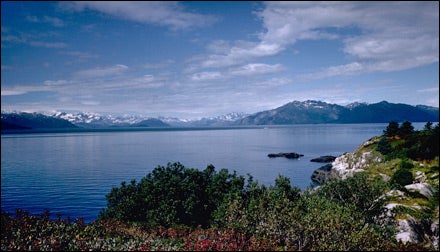
The Sell: Paddling the wet wilds
A short 2.5-hour hop from Seattle, Juneau averages 54 inches of rain per year. All that precip makes this a nutrient-rich haven for whales, dolphins, sea otters, porpoises, sharks, and other marine life. Southeast Alaska is an ideal spot for families, fishermen, and aspiring marine biologists. There are few roads leading out of Juneau, so an outgoing Cessna is your access pass. Your likely fellow passengers: a bearded commercial fisherman wearing a Deadliest Catch cap, an expedition kayaker, or a thrill-seeking retiree looking to ditch the “newlyweds, overfeds, and almost-deads” on the cruise ships.
Outfitted: , an 84-foot sweetheart of a yacht, ranks high in the most-luxurious-way-to-see-Alaska category. With in-suite showers, an aft cockpit with a teak dining table, a top sundeck, and a swim and fishing platform, there’s not a chance you’ll get claustrophobic. Weather depending, Captain Michael Mills recommends one of eight weeklong routes between Juneau and Sitka, all of which allow you to kayak, get close to bears and marine life, watch glaciers calve, and catch your own dinner when the fishing’s good ($10,000 per two-person cabin, all-inclusive).
DIY: For a self-guided Alaskan initiation, paddle . Rent a kayak from park concessionaire , then launch from the beach in front of Glacier Bay Lodge for a 55-plus-mile paddle up the bay to the Carroll, Rendu, Margerie, or Johns Hopkins glaciers ($45 per day). Or get among the ice and wildlife—bears, coyotes, wolves, sea lions, porpoises, humpback whales, and myriad fish and bird species—by hopping aboard ‘s high-speed catamaran, which will transport you and your kayak to a designated drop-off site, then pick you up a week or so later at another designated site across the bay ($115.50 each way). For your final night in the park, save enough cash to splurge on a room with a hot shower and a view, followed by a feast of the freshest salmon you’ll ever eat, at (doubles from $199).
Wild Card: Surfing in Alaska? Nominally sane surfers head to Yakutat. Within 15 minutes of stepping off Alaska Airlines Flight 61 from Seattle, you’ll be trolling the coastline for the perfect break. May, June, and September are the best months to find rideable waves, but be prepared for water temps in the upper forties. Jack Endicott, at , rents boards ($20 for fiberglass; $30 for a stand-up paddleboard).
Lake Clark and Katmai National Parks
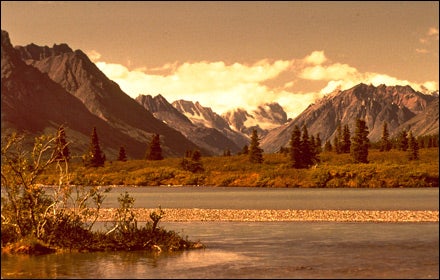
The Sell: Safari northern style
Ask an Alaskan what the most underrated national park in the state is and he’ll likely answer Lake Clark, just an hour’s flight west of Anchorage. The four-million-acre park’s active volcanoes, abundant salmon, healthy brown bear population, and frothing rivers and waterfalls make it the perfect spot for folks who want to hunker down in a lodge to fish or just plain gawk at the mind-blowing scenery. Tack on an hourlong flight from Anchorage to KatmaiNational Park, home to over 1,000 brown bears (one of the world’s largest protected populations), and your eyes will be popping out of their sockets.
Outfitted: Called the “Cadillac of bear trips,” ‘ Alaska-centric trip is the voyage of choice for BBC, Discovery Channel, and Imax cameramen who want four days of intense bear interaction. From mid-June to late August, guests fly from Kodiak to the Shelikof Strait to board a converted tugboat equipped with simple bunk rooms. You’ll cruise 50 to 60 miles along the Katmai coast for an average of 20 bear sightings per day. This trip isn’t for the fainthearted; you’ll land on the beach and get alarmingly close to the big guys ($3,750, flight from Kodiak included).
DIY: Lake Clark National Park’s is a surprisingly easy way to immerse yourself in wildest Alaska for a weekend. An hourlong flight from Anchorage’s Lake Hood drops you at the lodge, on nine-mile-long Crescent Lake, which sits at the base of active, 10,197-foot Redoubt Volcano. Spend your days casting for silver or sockeye salmon, staring down a 600-pound brown bear, or enjoying a glass of wine from a hot tub that overlooks the lake. As appealing as the surroundings: chef and co-manager Heather Richards’s cooking, guide Andrew Sells’s encyclopedic knowledge of fishing, and your own cozy cabin ($1,245 for one-night stay, $1,845 for two, including round-trip bush flight with Rust’s Flying Service and food).
Wild Card: Twitchers go nuts for ‘ eight-day Adak Trip, in the Aleutian Islands, the volcanic arm that extends west into the Bering Sea from Katmai National Park. The reason: You’re technically in North America, but can still tick numerous vagrants from Asia that blow off-course—like the whooper swan, the falcated duck, and the black-tailed godwit—off your life list. Your unconventional digs: converted condos on a decommissioned World War II military base ($4,400).
Anchorage
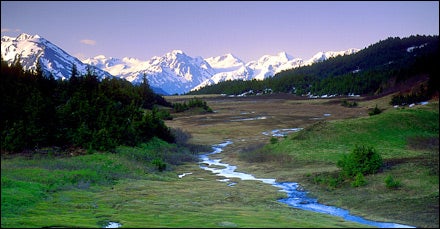
The Sell: Easy-access wilderness
There’s a reason the phrase “I [heart] the Chugach National Forest” adorns the bumpers of so many cars in Anchorage. With this 5.4-million-acre playground (the least-roaded national forest in the nation) in their backyard, trophy king salmon fishing on the Kenai Peninsula’s Russian River, just a few hours south (watch out; it’s a zoo in July), and some of the best skiing on the planet just a 35-minute heli-flight away, the 60 percent of Alaskans who live in this “urban” area are happy to leave the rest of the state to the bears.
Outfitted: have been making ski-porn fantasies come true for 17 years. The season is short—late February through early May—but if you’re an advanced-to-expert skier and want to ski like the pros, this trip’s for you. Guests are guaranteed 30 heli-accessed runs in the heart of the Chugach Mountains, each one averaging 4,000 feet of vertical. All of this is just a 35-minute flight or a five-hour drive from Anchorage. At $7,640, it’s not cheap, but the price tag includes seven nights at the waterfront Valdez Harbor Inn, breakfast, lunch, a four-to-one client-to-guide ratio, and avalanche safety gear. There are three-day trips for $3,310.
DIY: Hop on the Alaska Railroad’s brand-new, low-emission, diesel-propelled rail car in downtown Anchorage and ride the train a few hours south along the Turnagain Arm to a new hike-in campground, with a close-up view of Spencer Glacier. Paddle a native-style dugout canoe out to the calving ice or take a whitewater raft ride down the Placer River with ($202, train tickets and picnic lunch included). Back in town, crash at the (doubles from $119).
Wild Card: In July and August, close to 50,000 salmon sharks swarm to Prince William Sound, near Valdez, in search of kings, silvers, and pinks. Seven to eleven feet long, weighing up to 400 pounds, and with the ability to swim up to 50 miles per hour, the salmon shark is in the same family as the great white, fights like a marlin, and tastes like swordfish. Go catch one with , whose $600 daily rate includes lodging at the only B&B in Valdez, meals, and your guide.
The Brooks Range
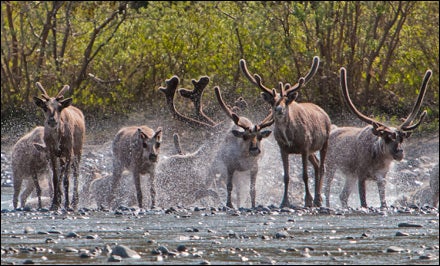
The Sell: Unmitigated solitude. And caribou.
If you haven’t read John McPhee’s , go get it. McPhee captures the remarkable remoteness of this pristine region, one of the least-visited places in the state, where massive caribou herds roam, six Wild and Scenic rivers flow, and there are no trails or roads. It’s a place where you’re likely to see a wolf stalking a line of caribou ten miles long. At the heart of this eight-million-acre protected area is Gates of the Arctic National Park, one of the crown jewels of the NPS system, perfect for river trips and backpacking. It’s so out there that it can be difficult to navigate on your own, so we recommend plugging into one of the following expert outfitters.
Outfitted: In August, spends ten days trying to catch up with the 400,000-strong Western Arctic caribou herd on the Nigu River. You may not see a half-million caribou at once, but there’s almost always a steady flow of between ten and 100 animals feeding on the willows along the river or roaming the hills, nose to butt. Riddled with Eskimo ruins dating back thousands of years, the Class II–plus Nigu starts in Gates of the Arctic, then leaves the park and flows through glacial moraines. The gravelly ridges are ideal for all-day hikes into the Arctic landscape. At the end of the day, you’ll enjoy a good glass of boxed wine with chili and homemade cornbread—a warming antidote to the massive terrain ($4,400, including internal air from Fairbanks).
Outfitted: Photographers who want to skip the float and focus on the caribou herds and blazing fall tundra should plan on ‘ Fall Caribou Basecamp trip, August 24–30. You’ll set up camp at a high lake in the Endicott Mountains, in the northwest corner of the park, then fan out along the tundra to watch the caribou (and likely grizzlies, black bears, and wolves) stream by as the Northern Lights eventually flare up the Indian summer sky. The trip is as out there as it gets, but you’re in good hands: Owner Jim Campbell and his partner, Carol Kasza, have been guiding here for more than 30 years ($3,575, including internal air from Fairbanks).
Arctic National Wildlife Refuge
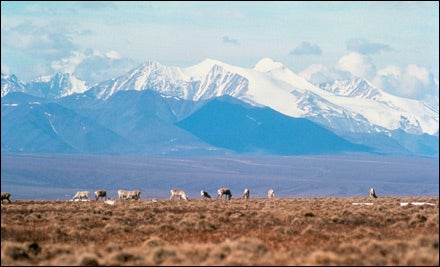
The Sell: Inupiat culture and wildlife
An increasingly threatened 19.2 million acres of solitude covering seven ecological zones, this region spans 250 miles north to south, entirely above the Arctic Circle. Pro-oil interests are always itching to drill the estimated 5.7 to 16 billion barrels of oil here. Yes, that’s a lot of crude, but this largest roadless refuge in the U.S. is also a haven for the centuries-old Inupiat culture, grizzlies, polar bears, moose, musk oxen, and caribou. With just one Inupiat village, 125 miles of Arctic Ocean coastline, and the remaining refuge one big wide-open space for large beasts to roam, there are plenty of ways to get into the wild here—so long as you have access to a plane and are comfortable navigating rivers by canoe and trail-less tundra on foot.
Outfitted: Think African-style river safari through frozen tundra. ‘s ANWR trip takes you up and over the jagged 9,000-plus-foot Brooks Range to the treeless North Slope, where you’ll start a ten-day journey toward the Arctic Ocean via the silty Canning River, one of the most remote river systems in North America. In the dead heat of an Alaskan summer (which means T-shirt and shorts during the day and 24 hours of daylight), you’ll watch the thousands-strong Porcupine caribou herd migrate across the water, while ospreys and other predator birds circle above. You’ll likely see a few musk oxen, grizzlies, and moose, too, but the line of sight is so endless, there’s no need for fear. The A&K guides won’t have linen tablecloths, but you will have bacon-filled omelets for breakfast and fine wines with dinner. Still hungry? Get your fly rod out and fish for grayling, trout, and arctic char ($7,000, including round-trip flight to Arctic Village from Fairbanks).
DIY: For a sweeping overview of this solitary, wide-open space, start your backpacking trip at Spring Creek, a tributary of the Junjik River on the southern flank of the Brooks Range, then trek on caribou trails over the Continental Divide on Carter Pass to the Marsh Fork of the Canning River, on the north side of the Brooks Range. You’ll ford snowy creekbeds and camp in sites with 50-mile views, which will likely include a lot of caribou, moose, and grizzlies. Dirk Nickisch and Danielle Tirrell, owners of , will help you fine-tune your plans and fly you from Coldfoot to the dropoff in their DeHavilland Beaver, which fits five people with backpacking gear. They’ll pick you up five days later ($3,788 round-trip). In Coldfoot, camp at the , five miles north of town ($9).
Wild Card: Travel out of time and fully immerse yourself in a subsistence wayof life with ‘ overnight polar-bear-viewing trip to Kaktovik. The only village in ANWR, 260 miles above the Arctic Circle, Kaktovik is the ultimate spot to view how the Inupiat and polar bears have relied on whale for thousands of years ($2,299).
Pack Heavy
The four topics Alaskans are most tired of discussing? ANWR, Sarah Palin, Christopher McCandless, and Timothy Treadwell. You’d be wise to avoid them. You’d also be wise to pack these essentials:Five more pairs of socks than you think you need, because most of the time your feet will be damp, wet, or drenched. We like ‘s PhD Outdoor Medium Crew ($22).Alaskans wear rubber boots. Pick up a pair of 100 percent waterproof, insulated, plain-toe rubber XTRA TUF boots ($98). Buy an additional pair of felt liners.If you’re heading deep into the backcountry, rent an Iridium Satellite Phone for $50 per week through .����($6) covers every critter you’ll find.Four nine-ounce, 15 percent deet spray bottles per person. Like everything in Alaska, mosquitoes are outsize.Even if you don’t mean for your gear to get wet, it will. ‘ SealLine Black Canyon drybags are watertight, extra-tough, and PVC-free. Available in five-to-55-liter sizes ($20 to $55).If you still haven’t found your Alaska trip, visit . The former concierge can custom-fit any trip down to the species of fish you want to catch.
Stories of the North
Tales of Alaskan adventure.
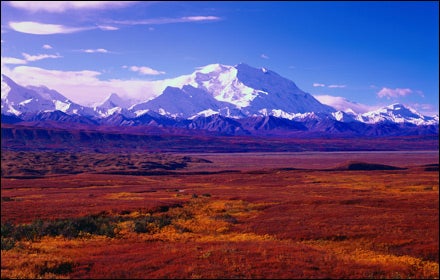
The High Way
There is more to a bush flight than a glimpse of granite and glacier. It’s the company. The best pilots won’t just shock you with yaw and sway you with pitch; they’ll also weave you a story of aviators, explorers, wilderness, and geology. I started flying onto Denali in 1986. By ’88 I was guiding on the mountain and was catching rides out of Talkeetna with a living legend. Cliff Hudson, who’d gone into the business in 1946, was the quintessential Alaskan bush pilot, and I felt fortunate to see him at work. My luck continued as I formed a friendship with his son, Jay, who took over chief pilot duties at Hudson Air Service. In December, Jay died at age 52 from cancer. He and I had spent 20 years building genuine respect for one another. My preference has always been to go at the very end of the normal climbing season, in July. But by then, most Talkeetna pilots have switched to freshly showered tourists who don’t require landings on skis uphill in the snow. I figured Jay would quit climbers altogether at some point, but he said that such awkward flights—be they for climbers, fishermen, or folks in the bush needing their mail—were the guts of his family business and always would be. Some years, I’d conspire to get that last flight off the mountain all by myself with Jay. I wouldn’t require a big tour on the trip back, and he wouldn’t require a blow-by-blow of the three-week climb. Sure, I’d ask him what it had been like controlling a plane at age eight or getting his pilot’s license at 16. And I’d nibble politely about how he could live so far from everything. But often I’d just shut up and enjoy the company, the amazing Alaskan summer sun, and the world spinning oh-so smoothly beneath Jay Hudson’s trusty Cessna 206 Turbo.
—Dave Hahn��
Kings of All That
Fishermen are a foolhardy bunch—nowhere more so than in Alaska. With good reason: Alaska is the piscatory promised land. Piggish rainbows, overeager grayling, freight-train-like salmon—they’re all here. And they’re all equally fun to catch. That is, of course, with one exception: king salmon. In Alaska, kings are king, and landing one on a fly, possible in only a few places, is the pinnacle of sport. Last June, at Deneki Outdoors’ Alaska West tent camp ($4,900 per person, includes lodging, food, and guided fishing;http:// ), a remote fly-in camp on the banks of the Kanektok River, in western Alaska, the kings were running, and so was I. In three days, I hooked two but landed neither. Another fisherman in camp, an 85-year-old named John, had been trying to catch a king for 12 straight days, coming within an arm’s length of success. In the course of his pursuit, John’s face had become sunburnt, and by the 12th day, when he announced he’d had enough, his skin was peeling like a snake’s. But the next morning, John got up, lathered himself in sunscreen, and hit the water again. He hooked two kings…and landed both. After returning home, he planned a four-week trip for the following summer.
—Ryan Krogh����
Travel Advisory
Little-known fact: Along with grizzlies and moose, Alaska’s wilderness teems with another highly specialized charismatic megafauna: Polaris romanticus, more commonly known as the Alaska Romeo. An exquisitely adapted bipedal mammal, Romeos survive by latching on to lower-48ers for a single summer at a time, sustaining themselves on wide-eyed dreams of wilderness living. In our small town, for instance, there’s one storied female Romeo whose cabin was built entirely by lower-48ers: First she hooked up with a visiting carpenter, then an electrician, and so forth. Then there’s the Romeo whose annual hookups comprise his fishing crew. A sure sign of summer: the sight of his boat headed out with a freshly minted girlfriend (or, some years, two) perched on the bow. It’s possible for visitors to safely interact with P. romanticus, provided they use common sense and follow a few simple rules.
What to look for: Sun-bleached, wind-whipped hair, horizon-gazing eyes, rosy complexion, ripped Carhartts. Other identifying marks: a devil-may-care smile, a mid-1980s Subaru. Habitat: Fishing boats, saunas, and cabins in need of constant upkeep (often provided by willing lower-48ers). Both males and females reach peak maturity in their mid-forties; a few have even stayed active into their sixties. They gravitate to vague, seasonal jobs such as “fish counter” or “volunteer fireman.”
What to do: Be aware that late-summer evenings are P. romanticus’s prime hunting time. Twenty daily hours of sunlight frequently leaves lower-48ers dazed, blissful, and vulnerable. Avoid displaying bright, shiny objects, like rental cars, credit cards, and hotel-room keys. Also avoid demonstrating potentially useful skills, like wood splitting or clam digging. If a Romeo should display overaggressive behavior, it’s recommended to employ either pepper spray or a sentence beginning with the phrase “When we’re married…” Both work equally well.
—Daniel Coyle


